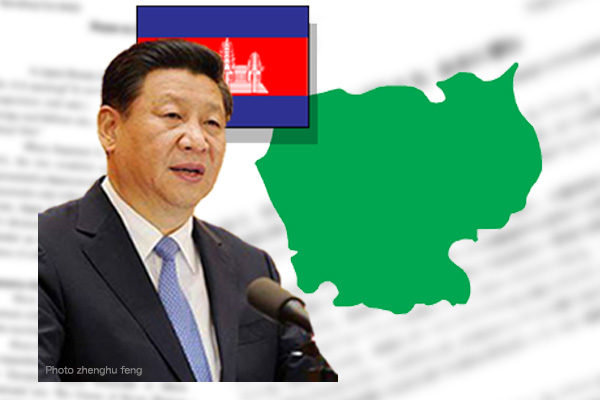On April 5, ceremonies were held at the Ream Naval Base in southwestern Cambodia to mark the completion of its expansion work under Chinese support and the inauguration of a China-Cambodia joint logistics and training center set up in the base. The center is planned to be staffed by the Chinese People's Liberation Army, meaning that China has effectively obtained its second overseas military base after the first one opened at Djibouti, northeastern Africa, in 2017.
Chinese military personnel and warships at Ream
The ceremony for the logistics and training center was attended by Cambodian Prime Minister Hun Manet and a Chinese military delegation. “The center is designed to support the two militaries in conducting regional counter-terrorism, disaster prevention and mitigation, humanitarian assistance, joint training, and other operations,” said China's Ministry of National Defense. “Both sides will dispatch personnel to jointly maintain the regular operation of the center.” China will thus permanently station military personnel at the center.
Satellite imagery shows that two Chinese Navy Jiangdao-class corvettes have moored at a new pier of the Ream Base since December 2023, and that facilities similar to those at a Chinese military base have been constructed in the northern part of the Ream Base. The center's inauguration ceremony was also held in the northern part of the base, indicating that Chinese military personnel are likely to be stationed at the northern part where the new pier exists.
Hun Manet in his address at the ceremony said Cambodia would welcome port calls at the Ream Naval Base by ships from all friendly countries. On April 19, the Japan Maritime Self-Defense Force's minesweeper tender Bungo and minesweeper Etajima became the first foreign warships to call at Ream after the completion of the expansion work. On April 28, a Vietnamese Navy ship made a port call there.
Japanese television reports on April 19 and satellite imagery on April 28 showed the Japanese and Vietnamese ships docked at the base’s southern pier instead of the northern pier where the Chinese ships have been moored. The Cambodian prime minister at the ceremony said that his government has no plan to amend the constitution that does not allow foreign troops to be stationed in Cambodia. But the northern part of the Ream Naval Base may be used exclusively by the PLA. Ream thus could now be called as China’s second overseas military base.
Aiming at expanding its influence in Southeast Asia
As China has already built and effectively controls large artificial islands with facilities such as ports, runways, and air defense systems in the South China Sea, it is unlikely that the Ream base, which faces the Gulf of Thailand (Gulf of Siam) away from the South China Sea, will be used as a base for China’s South China Sea operations.
However, China may intend to use its forces stationed at Ream for expanding its influence on the members of the Association of Southeast Asian Nations (ASEAN), especially for posing threats to Vietnam that has a maritime territorial dispute with China, as well as Thailand that organizes joint military drills with the United States and partner countries. China may also have plans to use Ream as a base for strengthening its presence and gathering information in the waters from the Gulf of Thailand to the Strait of Malacca. In the longer term, China may want to construct transportation infrastructure such as high-speed railways connecting China with Laos, Thailand, and Cambodia to make Ream as the terminal of the land route from inland China and the exit to the Gulf of Thailand. We will have to pay close attention to the future operations of the Ream base.
Maki Nakagawa is a researcher at the Japan Institute for National Fundamentals and a former commander of the Basic Intelligence Unit, Japan Ground Self-Defense Force.


